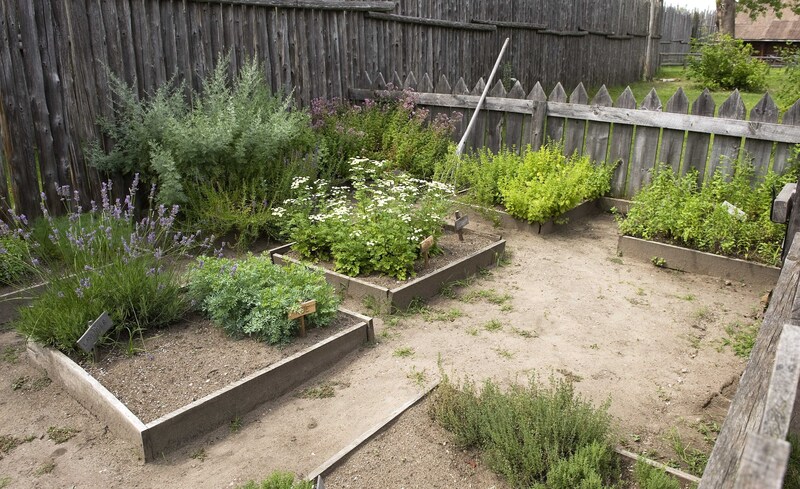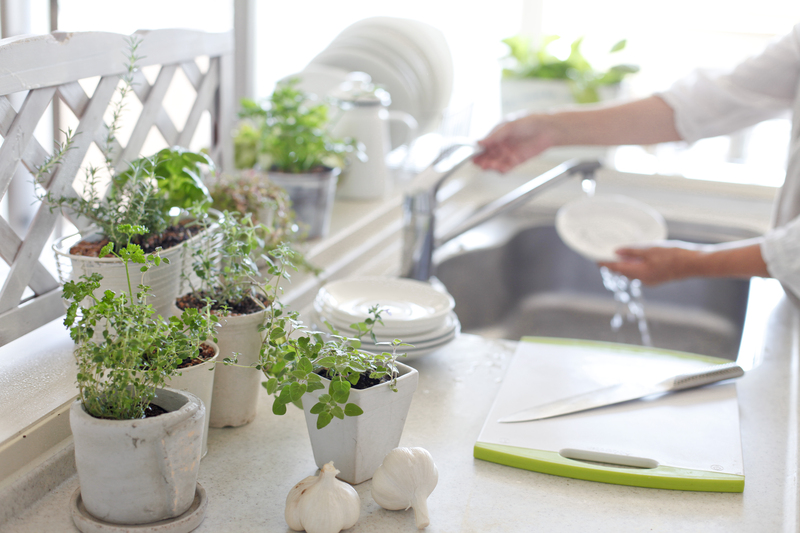Getting Started with Container Gardening
Posted on 28/08/2025
Getting Started with Container Gardening: A Comprehensive Guide
Container gardening has taken the world of horticulture by storm, offering new and seasoned gardeners an accessible way to bring greenery into virtually any environment. Whether you have a sprawling backyard or a compact apartment balcony, container gardening is the perfect solution for cultivating plants in small spaces, adding beauty to your home, and even growing fresh produce year-round.
What is Container Gardening?
Container gardening refers to the practice of growing plants exclusively in pots, tubs, or other containers, rather than planting directly in the ground. This method allows anyone--regardless of space limitations--to enjoy the many benefits of gardening. Container gardening can involve anything from decorative houseplants to productive vegetable gardens, and it opens up a world of possibilities for creative expression and sustainable living.

Why Choose Container Gardening?
- Perfect for Small Spaces: Ideal for apartments, patios, balconies, rooftops, and even window sills.
- Flexible and Portable: Containers can be moved to catch sunlight, avoid harsh weather, or simply to refresh your space's look.
- Controlled Environment: Easier management of soil quality, water, and pests.
- Accessibility: Excellent option for individuals with limited mobility, as containers can be raised to a comfortable height.
- Diverse Plant Choices: Grow flowers, herbs, vegetables, fruits, and even small trees.
With so many advantages, it's no wonder the popularity of container gardening continues to grow. Let's explore how to embark on your container gardening journey.
Choosing the Right Container
The success of your container garden starts with the pots or containers you choose. Not all planters are created equal, so it's crucial to understand which options are best for your plants and style.
Material Matters
- Terracotta: Classic and breathable, terracotta pots help prevent soggy soil but can dry out quickly in hot weather.
- Plastic: Lightweight, affordable, and available in an array of colors, but may not provide the best insulation for roots in extreme temperatures.
- Ceramic: Glazed ceramic pots are beautiful and retain moisture well, but can be heavy and prone to cracking in freezing weather.
- Wood: Rustic and natural, but ensure the wood is rot-resistant and not treated with harmful chemicals.
- Metal: Modern and durable, but can overheat in full sun and may require liners to protect roots.
Size and Drainage
Size is critical. Ensure your container is large enough for root growth and has adequate drainage holes. Good drainage prevents water from pooling at the bottom and causing root rot--a common issue in confined environments. For larger plants or multiple species in one pot, deeper and wider containers are ideal.
Best Soil for Container Gardens
Never use regular garden soil for container gardening. It tends to compact, restrict root development, and impedes water flow. Instead, choose a high-quality, well-draining potting mix specifically formulated for containers. Many commercial mixes include added nutrients, perlite, or vermiculite to further enhance drainage and aeration.
- Organic Container Mix: Contains natural fertilizers and compost for healthy, sustainable growth.
- Moisture Control Potting Soil: Holds moisture longer, helpful in hot climates or for moisture-loving plants.
- DIY Mix: Combine peat moss, compost, perlite, and coconut coir for a customizable base.
Choosing the Right Plants for Container Gardens
Your container garden can reflect your tastes and needs, from vibrant flowers to edible herbs and vegetables. When selecting plants, consider the following:
- Sunlight Requirements: Some plants thrive in full sun while others prefer shade. Check your space's light patterns before choosing.
- Growth Habits: Compact or trailing plants often perform best in containers.
- Water Needs: Group plants with similar moisture requirements for easier maintenance.
- Visual Appeal: Combine plants with varying heights, colors, and textures for an eye-catching display.
Popular Choices for Container Gardening
- Herbs: Basil, parsley, thyme, mint, and chives - perfect for culinary purposes.
- Vegetables: Lettuce, cherry tomatoes, peppers, radishes, and carrots do well in confined space.
- Flowers: Petunias, marigolds, pansies, geraniums, and begonias add vibrant color.
- Fruit-bearing Plants: Strawberries, blueberries, and even dwarf citrus trees are possible with larger pots.
- Succulents and Cacti: For a low-maintenance, drought-resistant option.
Tip: For a designer look, follow the "thriller, filler, spiller" technique: combine a tall focal plant (thriller), lower plants to fill in gaps (filler), and trailing varieties to cascade over the edges (spiller).
How to Plant a Container Garden Step-by-Step
Step 1: Prepare Your Container
- Ensure your pot has sufficient drainage holes.
- If holes are large, line the bottom with a coffee filter or mesh screen to prevent soil loss.
- Clean containers before planting to minimize disease risk.
Step 2: Add Potting Mix
- Fill the container two-thirds full with quality potting mix.
- Mix in a slow-release fertilizer if your soil doesn't already contain nutrients.
Step 3: Arrange Your Plants
- Gently remove plants from their nursery pots, loosen the roots, and place them in your container.
- Tip: Leave at least a few inches between plants to allow for growth.
Step 4: Water
- Water your new container garden thoroughly. The water should escape from the drainage holes at the bottom.
- During the first week, keep the soil moist to help plants establish.
Caring for Your Container Garden
While container gardening is generally easy, a few simple practices can ensure your plants thrive season after season.
Watering Tips
- Check soil moisture daily, especially during hot weather.
- Water until it runs out of the drainage holes to encourage deep root growth.
- Morning is the best time to water, reducing evaporation and leaf diseases.
- Self-watering planters are a great option for busy gardeners.
Feeding Your Plants
- Container plants need regular feeding, as nutrients wash away with frequent watering.
- Use a water-soluble or slow-release fertilizer as directed for your specific plants.
Pruning, Deadheading, and Harvesting
- Remove spent flowers (deadheading) to encourage more blooms.
- Pinch back leggy growth for bushier plants.
- Harvest herbs and vegetables regularly for best flavor and productivity.
Common Problems and Solutions in Container Gardening
- Root Bound Plants: Roots circling the inside of the pot restrict growth. Every year or two, repot into a larger container or divide the plant.
- Wilting and Yellow Leaves: Often caused by overwatering or poor drainage. Ensure containers drain freely and don't let pots sit in water.
- Pests and Diseases: Aphids, spider mites, and fungal issues are common. Inspect regularly, use insecticidal soap, and avoid overhead watering.
- Leggy or Sprawling Growth: Increase sunlight exposure or pinch back stems for a more compact shape.
Container Gardening Through the Seasons
With the versatility of container gardening, you can enjoy stunning displays or fresh produce year-round. Here's how to adapt your approach each season:
Spring
- Start seeds indoors or plant hardy annuals and vegetables as soon as frost risk passes.
- Refresh soil in existing containers and prune perennials.
Summer
- Frequent watering is necessary due to heat and evaporation.
- Regularly feed fast-growing plants and monitor for pests.
Fall
- Transition to cool-season flowers and vegetables, like pansies and kale.
- Mulch or move containers to protected spots in advance of frost.
Winter
- In mild climates, hardy plants can remain outside with some protection.
- Move tender plants indoors or use insulated covers to shield roots from freezing.
Creative Ideas for Beautiful Container Gardens
Container gardening offers endless possibilities for personalization and creativity. Here are a few ideas to inspire your gardener's spirit:
- Grow a culinary herb garden on your kitchen windowsill for fresh flavors at your fingertips.
- Use recycled items--old boots, teapots, or crates--for eco-friendly and whimsical planters.
- Experiment with a vertical container garden to maximize greenery in minimal space.
- Create a butterfly or pollinator garden with nectar-rich flowers in a sunny planter.
- Design a succulent bowl for a low-maintenance, drought-tolerant arrangement.

Frequently Asked Questions About Container Gardening
Can I grow vegetables in containers?
Absolutely! Many vegetables--including tomatoes, peppers, radishes, lettuce, and beans--are well-suited for container gardens. Choose pots with enough depth to accommodate the root system, and ensure consistent watering for best yields.
How often should I water my container plants?
This depends on the plant species, container size, and environmental conditions. Most container gardens need watering every day or two during hot weather, but always check the soil moisture before watering again. Overwatering can be as harmful as underwatering.
Can I reuse potting soil?
Potting soil can often be reused for one or two seasons--but it's best to refresh it by mixing in compost or new potting mix and removing old roots. This restores nutrients and improves soil structure for new plants.
What should I do with containers in the winter?
In areas with freezing temperatures, move sensitive plants indoors or into a sheltered location. For hardy outdoor plantings, use frost-resistant containers and mulch the soil to protect roots.
Conclusion: Your Journey into Container Gardening
Container gardening is more than a hobby--it's a gateway to beautiful plants, fresh food, and a rewarding connection with nature right at home. With a little planning, the right materials, and these beginner steps, anyone can succeed at creating a thriving container garden. Whether you're aiming for lush floral displays or a functional edible oasis, the opportunities are as limitless as your imagination.
Ready to dive into the world of container gardening? Gather your pots, choose your favorites, and let your green thumb grow!

